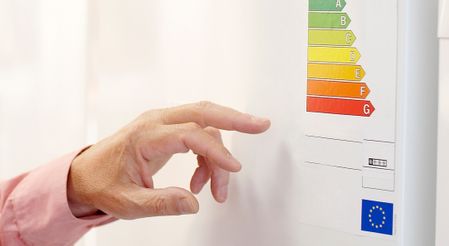CORE SOLUTION EXPLAINED
The NEEM Hub core solution is designed to simplify and automate the process of finding profitable energy renovations for residential houses. It has been tested in multiple pilot studies in Denmark, Norway and Sweden.
To discover houses that are likely to have an energy efficiency gap, we do an initial screening of potential candidates. We use public data on housing characteristics to do an initial “predicted energy label” screening before reaching out to candidates. If consented to by candidates, we perform the NEEM Hub core solution, which is centred around the following three steps.
To evaluate the potential energy savings, we must first estimate the energy efficiency performance of the house. We do this by gathering data on hourly energy consumption as well as weather data. Hourly energy consumption depends on the actual energy efficiency of the house and a behavioural aspect. The behavioural aspect covers preferences for indoor temperature, how often the house is being aired out, and use of e.g., laundry machines or other electric devices with large electricity consumption.
In short, all use of energy is caused by behavioural actions, with no relation to the energy performance of the materials and build of the house. The actual energy efficiency of the house depends on its performance regarding wind tightness and insulation power when subjected to different weather characteristics such as wind, sunshine and temperature.
- ESTIMATING EPC LABELS WITHOUT ANY CONSUMER INPUT
2. ESTIMATING ENERGY RENOVATION COSTS AND SAVINGS FOR DIFFERENT ENERGY LABELS
Employing the estimated actual energy efficiency performance of the house, we have developed an economic model developed for the NEEM Hub core solution, to calculate the capital costs of energy renovation between each energy performance certificate. That is, how much a renovation would cost to increase the EPC label from e.g., D to C, D to B or D to A.
Additionally, we also calculate yearly savings on the energy bill between each energy performance certificate, increase in possible sales price for the house and total potential CO2 savings per year.
The model is developed using real data on district heating prices and renovation costs as well as the possible cost of a loan to finance the renovation, given different interest rates on the mortgage.
The model runs through all possible renovation scenarios to find the EPC label renovation that maximises net savings. The optimum energy label is defined as the energy label, that results in marginal savings on energy bills being equal to marginal capital costs of energy renovation. In other words, we recommend increasing the EPC label as long as the energy bill savings are larger than the cost of doing the renovation.
In our pilot projects, we have found around 50% of households to be net better off by conducting energy renovations, with the largest share having an EPC label D or lower. Typically, we recommend renovating up to label C.
Taking a conservation approach, however, we only recommend energy renovations for approximately 10% of households where energy renovations would be the most profitable. These houses typically have an EPC label before the renovation of F or E.
3. FIND OPTIMAL ENERGY LABEL AND GIVE CONCRETE RECOMMENDATIONS FOR RENOVATION
Once the energy renovation recommendations have been determined, we reach out to customers with a one-pager listing relevant information on their specific houses and a strong call to action if we deem renovations to be profitable. The outreach process has been behaviourally optimised to ensure the biggest impact. To learn more about our communicative initiatives, click below.







